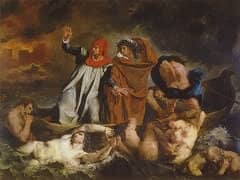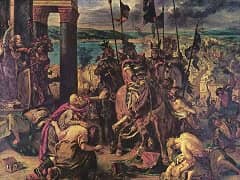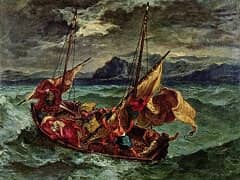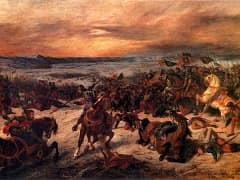Sea Viewed from the Heights of Dieppe by Eugene Delacroix
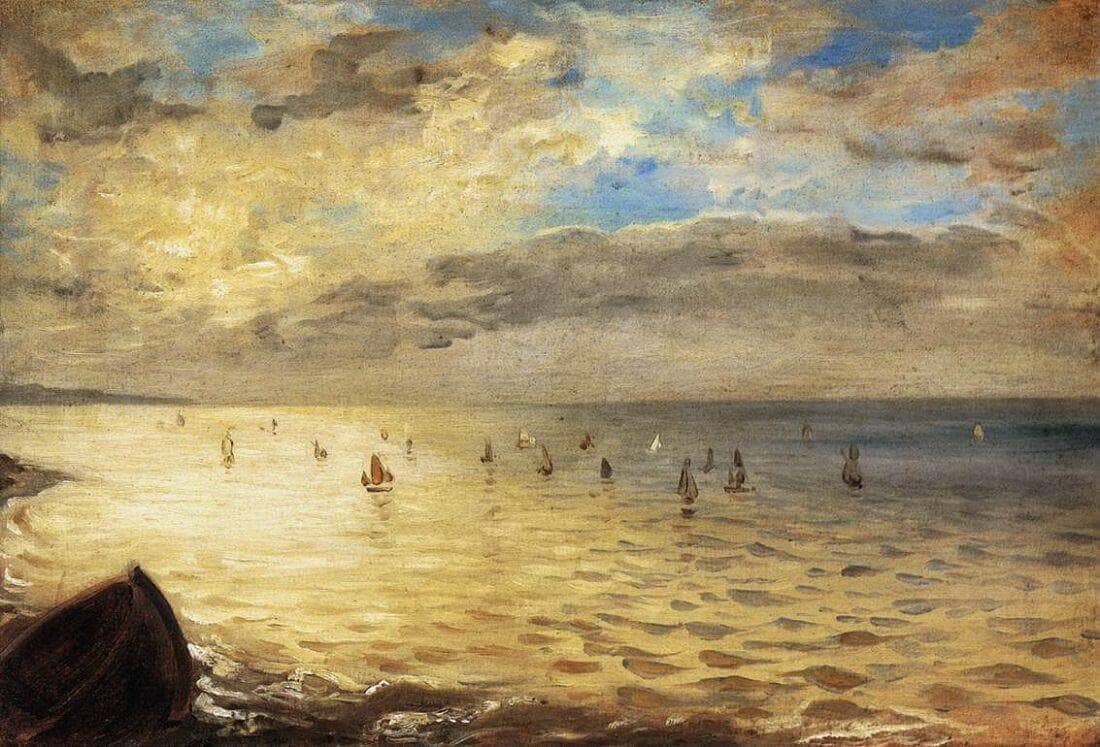
Delacroix visited Dieppe several times: from the end of August to September 10 or 12, 1851, September 6-14, 1852, August 17-September 26, 1854, and October 3-14, 1854. He notes in his Journal, September 14, 1852, after a last visit to the sea:
It was beautifully calm and one of the finest I have ever seen. I could not tear myself away. I was on the beach and did not go up on the pier the whole day long. The soul attaches itself with passion to things we are about to leave. It was recalling this sea that I made a study from memory: golden sky, barks awaiting the tide so they could come in."
Is Delacroix talking about this little seascape, so palpitating with life and light ? It is hard to be certain. Whether or not this work was done at the site, it nevertheless retains the quality of a direct study, caught on the wing. Delacroix here shows himself, both in vision and technique, the immediate forerunner of the Impressionists and he opens the path to plein-air painting.
Before Claude Monet and Van Gogh, Delacroix suggests the prodigious magic of air and water, he translates the mobility of clouds, and renders through little fractured touches the vibrations of the colored reflections of the sea; he gives the feeling of the rocking of sailboats at the whim of the sea breeze.




